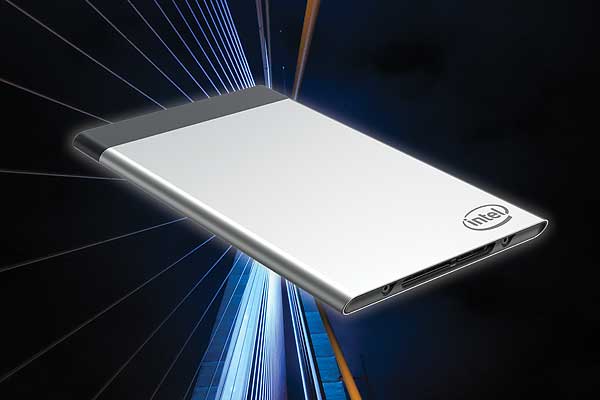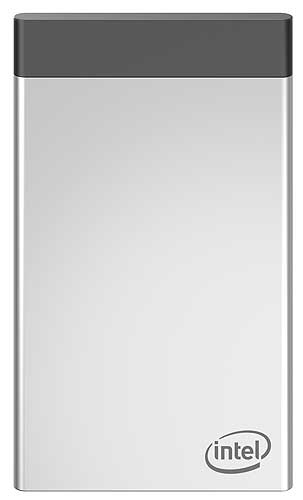 New designs in the IT market are considered to be revolutionary if they enable new device concepts and applications that were previously either impossible or only possible to a limited extent in this new form. The ongoing miniaturization of chip designs and the resulting ever-increasing concentration of more and more computing performance in ever-shrinking spaces have been associated with new device concepts in the past that have heavily influenced the usability of computer systems. Whether one takes a tablet computer or smartphones as an example: These concepts first changed the consumer market before advancing into the industrial market in the next step, where they also opened up new ways of applying computer technology. However, all of these concepts involve completely new device classes that enable innovative application scenarios.
New designs in the IT market are considered to be revolutionary if they enable new device concepts and applications that were previously either impossible or only possible to a limited extent in this new form. The ongoing miniaturization of chip designs and the resulting ever-increasing concentration of more and more computing performance in ever-shrinking spaces have been associated with new device concepts in the past that have heavily influenced the usability of computer systems. Whether one takes a tablet computer or smartphones as an example: These concepts first changed the consumer market before advancing into the industrial market in the next step, where they also opened up new ways of applying computer technology. However, all of these concepts involve completely new device classes that enable innovative application scenarios.
Looking at the approach to mobility in computer technology thus far, we can find various concepts that still coexist, but at best merely complement each other. When traveling on holidays, we tend to bring a tablet, which is complemented by a smartphone. In the work environment, notebooks, convertibles, or slimbooks are part of the standard repertoire. Closer examination of a business trip quickly reveals different scenarios in which one needs to access computer technology and must therefore employ different concepts.
When traveling by air, people sit in airport lounges and work on presentations on a notebook while writing messages using the messaging services on a smartphone. When on board the aircraft itself, people are generally cut off from communicating with the outside world and continue using a laptop to prepare for meetings etc. On arrival at the destination, they must then connect the notebook to a projector or monitor for the presentation. The hotel room, on the other hand, is equipped with a more or less interactive television that connects via the hotel’s WLAN with a tablet, notebook, and smartphone to allow us to carry out work-related as well as personal tasks.
 One can therefore assume with a degree of certainty that most people always carry two to three different devices with them when they travel, and that these devices spend most of their time either switched off or running in power-save mode given the low average utilization across all devices.
One can therefore assume with a degree of certainty that most people always carry two to three different devices with them when they travel, and that these devices spend most of their time either switched off or running in power-save mode given the low average utilization across all devices.
Universal solution for business and personal use
How much more practical would it be if just one computer replaced all these devices? One that can do virtually everything that the other devices can also do? One that is also as small and handy as a credit card, therefore not only saving space and weight, but also enabling greater utilization. This is precisely where the Intel® Compute Card comes in: It is a fully-functional computer with external dimensions of 95 × 55 × 5 mm − roughly the size of a credit card −, a power consumption of below 10 W as well as a standardized interface that offers a completely new approach to mobile computing. It is clear that this concept is unlikely to catch on without a widely available eco-system. This is the very point where we need to consider the possibilities of this concept.
As mentioned at the outset, designs previously classified as revolutionary were devices that functioned more or less out-of-the-box without any notable eco-system, and this enabled them to gain acceptance quickly. This is not the case with the Intel® Compute Card because the Card requires docking facilities. Assuming that the eco-system partners can make suitable devices available to coincide with the launch of the card and that these circulate rapidly in the market, the following scenario is conceivable:
 Card instead of chaos
Card instead of chaos
Apart from a smartphone, the only thing you need to carry with you is the Intel® Compute Card. You complete your final preparations the day before your departure via the docking station at your desk in the office. Ideally, you simply insert the card into the card slot in the monitor. At the end of the day, you simply remove the card from the slot, put it in your bag, and set off on your trip the next morning. In the airport lounge, you insert the Compute Card into small monitors with compatible slots that are provided at the seats or in the restaurants and continue working until it’s time to check in. On the aircraft itself, the entertainment system will ideally also have a slot for the card so that you can also continue working here. On arrival at your destination, you simply insert the card for the meeting and presentation into the slot on the monitor and give your presentation. The television set in your hotel room also has a compatible slot so that you can continue working on the big monitor. What is the major difference to the now more commonplace docking stations designed for smartphones? Very simple: flexibility in the choice of operating system and applications used. With Microsoft Continuum, the choice of software is limited by the processor platform and small number of smartphones available with Windows 10, while the docking concept by Samsung for the Galaxy S8 is tied to Android.
For the time being, the performance of smartphones is unlikely to be sufficient for emulations and VMs, which means in most cases that these concepts do not offer the required added value. The advantage consists solely of only having to carry one device around. This − at least up to now − has not been satisfactorily achieved.
Perfect performance, specific scaling
It’s a different story with the Compute Card: The scaling of the Celeron® N3450 all the way to the vPro™-enabled Core™ i5-7Y57 enables performance to be adjusted to the majority of day-to-day applications. The interfaces provided via the docking connector enable the device manufacturers to connect both USB 3.0 host connections as well as Ethernet and up to two displays to the card, one of which can even be controlled at up to UHD resolution with 60Hz. As with the Intel® Bluetooth 4.2 and WiFi already integrated in the cards, this means that the interfaces required for the card to be used for the intended purpose in every docking system are available. However, use of the Intel® Compute Card is not confined to the applications described in the specified scenario. The continuation of this concept, which Intel® has already confirmed will include future processor generations, means that the Compute Card is also available for other applications that call for scalability, flexibility in the choice of operating system and programs used, as well as the possibility of easy upgrades to newer processor technology.
 One example is digital signage installations, most of which are currently realized by means of connected external PC systems, OPS modules in the monitors or boards integrated in the system. Each of these concepts has its advantages and disadvantages. Disadvantages include the complex and interference-prone wiring of the external systems on the one hand, and the cost of upgrading the internal board to new technology on the other. This is why the OPS concept was long expected to prevail. However it has proved to be too costly and complex to implement. Although new approaches such as Mini OPS improve the solution in principle, they do nothing to change the rather poor availability in the market.
One example is digital signage installations, most of which are currently realized by means of connected external PC systems, OPS modules in the monitors or boards integrated in the system. Each of these concepts has its advantages and disadvantages. Disadvantages include the complex and interference-prone wiring of the external systems on the one hand, and the cost of upgrading the internal board to new technology on the other. This is why the OPS concept was long expected to prevail. However it has proved to be too costly and complex to implement. Although new approaches such as Mini OPS improve the solution in principle, they do nothing to change the rather poor availability in the market.
Assuming that the Intel® Compute Card is available in sufficient numbers at market launch, the situation for applications in which robustness is not an essential − in which case external fanless box PCs or fanless Mini OPS modules are the better choice − should be more positive.
Compute Card in the IoT
If we cast the net a little further to include everyday domestic appliances in our homes, interactive and networked televisions as well as interactive refrigerators would be the ideal candidates to use the Intel® Compute Card. These appliances could also be upgraded to the latest processor technology and software after a few years. Likewise, the Compute Card from work could be connected to the domestic television set, which would allow you to continue working on a large screen at home.
Naturally, you can already connect a tablet via HDMI to the television and use it as a monitor. But you are still restricted to the respective platform. If the development in the field of roll-up or folding OLED screens continues to progress and if these types of concepts are brought to market maturity, there would also be no obstacles to the mobile use of the Intel® Compute Card in conjunction with these types of display solutions.
Ultimately, the availability in the near future of an eco-system that is as diverse as possible will determine the success of this revolutionary design. In this context, Rutronik is on hand to advise device and system manufacturers about developments – be it implementation in a new digital signage system or in the very latest high-end refrigerators. Our colleagues on the ground are only too happy to advise you of the possibilities that the use of an Intel® Compute Card in your application could provide.
Author: Mario Klug, Senior Marketing Manager, Embedded Boards & Systems
Rutronik Elektronische Bauelemente | www.rutronik.com



